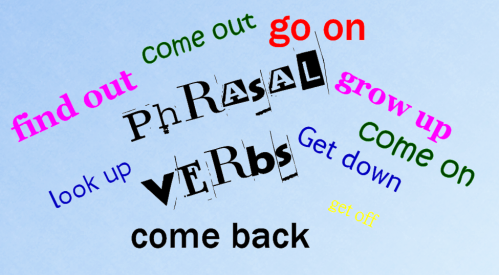When developing a vocabulary set for an augmented and alternative communication (AAC) system – or indeed when deciding on what vocabulary to teach anyone – one of the most fundamental of measures you can use is frequency count; how often is a word used in a language? No-one can predict with 100% accuracy which words will be “best” for an individual, but if you’re going to take bets, you’re pretty safe to assume that words such as that, want, stop, and what are going to be used by everyone from ages 2 to 200. By the same token, you’d not be missing much if you didn’t spend too much time on words like ambidextrous, decalogue, and postilion [1].
In the field of AAC, this type of high frequency vocabulary that is used (a) across populations and (b) across situations is referred to as core vocabulary and it’s often contrasted with the phrase fringe vocabulary, which refers to words that are typically (a) low in frequency and (b) specific to isolated activities or situations. For a refresher on core and fringe – and an introduction to keyword vocabulary – check out my article entitled Small Object of Desire: The Monteverde Invincia Stylus fountain pen – and Keyword Vocabulary from two years ago.
The core/fringe distinction is now so embedded in the world of augmentative communication that it is rare to see any new app appear on the market that doesn’t use the phrase “core vocabulary” somewhere in its marketing blurb – even if it isn’t actually making good use of the core! And as core vocabulary is, by definition, common across ages, activities, situations, and pathologies, it’s not surprising that many AAC software offerings look the same, particularly with regard to the words being encoded [2].
But it’s worth taking a look at another level of frequency measurement, and that’s at the phrase level. Specifically, one area of research that seems to me to offer some value to Speech and Language pathologists and Educators working in vocabulary development is in the study of how phrasal verbs (PVs) are distributed.
So what’s a phrasal verb? Well, simply put, it’s a phrase of two to three words that are yoked together, which include a verb and a preposition and/or adverb. Examples include, “I ran into Gretchen at the ATIA conference,” “I backed up my hard drive,” and “I came across an interesting article on phrasal verbs.” The English language is stuffed to the gills with these type of verbs, and a feature of them is that they tend to have multiple meanings.
To find out how polysemous a phrase can be, you can use the excellent WordNet online tool, a huge database of words and phrases that let you check out noun, verb, adjective, and adverb meanings. For example, would you believe that the simple phrase “give up” has 12 different meanings? Or that “put down” has 8 variations? It’s not surprising that learners of English find phrasal verbs quite challenging.
The other fascinating feature of phrasal verbs is summarized in a 2007 paper by Gardner and Davies, who point out that of you look at the 100 million word British National Corpus you find that;
…a small subset of 20 lexical verbs combines with eight adverbial particles (160 combinations) to account for more than one half of the 518,923 phrasal verb occurrences identified in the megacorpus. A more specific analysis indicates that only 25 phrasal verbs account for nearly one-third of all phrasal-verb occurrences in the British National Corpus, and 100 phrasal verbs account for more than one half of all such items. Subsequent semantic analyses show that these 100 high-frequency phrasal verb forms have potentially 559 variant meaning senses.
Read that again and see if you get the same tingle I did seeing those numbers. Over half the entire phrasal verbs found in the corpus can be accounted for by combining 20 verbs with 8 particles. In short, if you learn just 28 words, you’ve learned 50% of all the phrasal verbs you’ll need to use.
Let’s take a look at those Top 2o verbs first:
And now the Top 8 particles:
All the verbs and prepositions as individual items are already high frequency, with the exception of perhaps the verbs point and set, which wouldn’t be on my list of “first words to teach.” However, the real bonus here is that not only do you get the benefit of teaching your client 28 high frequency words in isolation but if you then use them as phrasal verbs, your “bang for buck” is significant!
Here’s a link to a PDF of those 28 words: https://app.box.com/s/vng5hr2tctp87ufdjoyjvyv2ln8300yb
This frequency analysis of phrasal verbs by Gardner and Davies has recently been supported by and extended upon by Dilin Liu (2011) and by Mélodie Garnier and Norbert Schmitt [3] (2014). In their paper, The PHaVE List: A pedagogical list of phrasal verbs and their most frequent meaning senses, they point out that a limitation in Gardner and Davies’ analysis is that they failed to take into account the polysemy inherent in the phrases – like the 12 meanings of “give up.” In fairness to Gardner and Davies, they did, in fact, talk about the polysemous nature of PVs but didn’t offer any measure of the different frequencies with which the various meanings are used. They wrote that:
For instance, the list-high 19 senses of the PV break up … could be arranged from highest to lowest semantic frequency, thus prioritizing them for language learning. We acknowledge, however, that corpora of this nature are much easier talked about than constructed. (p.353).
Garnier and Schmitt are interested not just in identifying the frequency with which a phrasal verb occurs but also the most common senses of those PVs. They say that;
…our main purpose for creating the PHaVE List, which is to reduce the total number of meaning senses to be acquired to a manageable number based on frequency criteria.
On a pragmatic level, they want a learner not to have to learn every meaning of each PV but just focus on the most frequent, and therefore most useful meanings. Using the original list from Gardner and Davies, along with additions by Liu (2011), and including data from the Corpus of Contemporary American English (Davies, 2008), the duo created the PHaVE List; a list of the 150 most frequently used phrasal verbs, and 280 of the most frequently used meanings. So on the 12 potential meanings for “give up,” they use the following:
16. GIVE UP
Stop doing or having something; abandon (activity, belief, possession) (80.5%)
Example: She had to give up smoking when she got pregnant.
The general entry starts with a rank (in this case, 16th out of 150); the basic phrasal verb; a definition; a percentage frequency; and a specific example use. The complete list is made available as a download from the Sage journals website [4]. If you can get access to it, it is well worth the read and the download. And all the articles referenced in this article are good examples of how we can use corpus linguistics to help guide our practice of developing the vocabulary of our clients with language challenges.
References
Davies, M. (2008-). The Corpus of Contemporary American English: 425 million words, 1990-present. Available from Brigham Young University The Corpus of Contemporary America English, from Brigham Young University http://corpus.byu.edu/coca
Gardner, D., & Davies, M. (2007). Pointing Out Frequent Phrasal Verbs: A Corpus-Based Analysis. TESOL Quarterly, 41(2), 339-359.
Garnier, M., & Schmitt, N. (2014). The PHaVE List: A pedagogical list of phrasal verbs and their most frequent meaning senses. Language Teaching Research, 1-22.Published online before print http://ltr.sagepub.com/content/early/2014/12/08/1362168814559798.abstract
Liu, D. (2011). The Most Frequently Used English Phrasal Verbs in American and British English: A Multicorpus Examination. TESOL Quarterly, 45(4), 661-688.
Notes
[1] A postilion is the driver of a horse-drawn carriage, who sits posterior to the horses. The sentence “The postilion has been struck by lightning” is the basis of a wonderful little paper by the linguist David Crystal, published in 1995 in the journal Child Language Teaching & Therapy. Simply titled “Postilion Sentences,” Crystal defines a postilion sentence as “one which has little or no chance of ever being useful in real life. It could be used, obviously, because it is grammatically well-formed; but the contexts in which it would be natural to use it are either so restricted or so adult that the chances of a child encountering it, or finding it necessary to use it, are remote.” In the design of AAC systems, using pre-stored sentences may have some limited value but many “pragmatic utterances” turn out to be nothing more than postilions; unlikely to be used. This is why teaching sentences is neither language nor therapy.

Enter a caption
[2] The now-common practice of using core vocabulary also makes it much harder to prove plagiarism – or as we Lancastrians would say, “nicking someone else’s ideas.” People, of course, don’t “steal” ideas – they are “inspired” by the work of others. But such inspiration inevitably leads to systems appearing almost clone-like in their structure. It’s only when you get to the fine details of how words are organized and encoded that you can separate the wheat from the chaff. And there’s a lot of chaff out there.
[3] If I haven’t mentioned it before, Norbert is the author of an excellent book on vocabulary research methods. Here’s the full reference: Schmitt, N. (2010). Researching vocabulary : a vocabulary research manual. Houndmills, Basingstoke, Hampshire ; New York, NY: Palgrave Macmillan. It’s full of useful information and lots of web links worth exploring, and worth the $30 you’ll spend on Amazon US – or the £20.99 in the UK.
[4] Just a reminder to all members of the Royal College of Speech and Language Therapists that you membership benefits includes access to a number of Sage journals online, and Language Teaching Research is one of those. In fact, you have access to over 700 (yes, count ’em!) titles, including my personal favorites Child Language Teaching and Therapy, Clinical Linguistics & Phonetics, English Today, and the riveting Scandinavian Journal of Occupational Therapy. OK, so I lied about the last one being a “favorite” 🙂







